Pair Distribution Function (PDF) experiments are complementary to traditional crystallographic analysis on powder diffraction data, in which only Bragg reflections are considered. The method utilizes both, Bragg and diffuse scattering, and is a useful technique to investigate short and intermediate range order in materials like glasses, liquids or nanoparticles, as well as amorphous and crystalline materials. PDF measurements require very high momentum transfer, high Q-resolution and good counting statistics at high angles where the intensity of reflections decrease significantly.
PDF measurements on Li-ion battery electrode materials were performed at beamline 04 MSPD at an energy of 30 keV (0.41 Å) using a Mythen II detector. Data was collected using a monochromatic beam in the angular range 0-120° with 0.006o resolution. In order to obtain good counting statistics at high Q values, longer exposure time was used at high scattering angles. Whereas Qmax in the experiment determines the wavelength of the termination ripples in the Fourier Transform G(r), Qdamp is correlated to the (angular) resolution of the setup and leads to a dampening of the peak height in G(r). It is determined by measuring an ideal crystalline material giving the maximum range of coherently diffracting regions that can be investigated with this setup. A measurement with a Ni standard was carried out to find Qdamp and the envelope function for G(r). The fit using a Gaussian envelope function, is shown in Fig. 1. Real space data were processed up to 2000 Å r-value using PDFgetX3 [J. Appl. Cryst. 46, 2013, 560-566] in the range 0<Q<26.1 Å-1. The Qdamp value due to limited resolution in Q-space, is 0.005. Fig 1) shows that structural correlations can be detected up to ~600 Å at the MSPD beamline.
The PDF method was then applied on pristine cathode material Li2VO2F with space group . Good PDF data was obtained in 3 min. exposure time with excellent beam conditions. The average structure refined by either the Rietveld (Fig 2-a) or PDF method (Fig 2-b) resulted in very similar values (e.g. atomic distances) with a very large atomic displacement parameter (ADP) for Fluorine.
When the atomic fractional coordinates of the F atoms were also refined in the PDF refinement the ADP values of the F sites decreased and the quality of the fit was considerably increased as shown in Fig. 3). This can be explained by a local distortion around the F atoms that cannot be handled with the Rietveld method. For the refinement a 2x2x2 supercell was used with randomly distributed F-atoms according to stoichiometry. The supercell was created using the program DISCUS [J. Appl. Cryst. 30, 1997, 171-175].
Additionally, the PDF method was applied on Li2-xVO2F at different charge/discharge states showing also distinct differences in local ordering (see Figure 4).
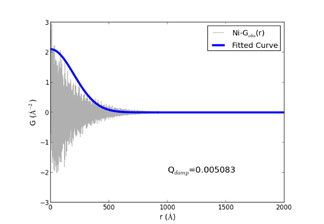
Figure 1: Gaussian Damping Envelope of Ni PDF data. Blue line shows experimental envelope curve by a Gaussian damping envelope function.
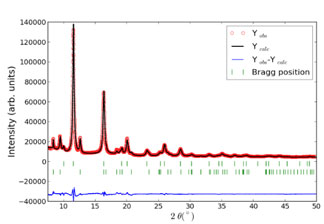
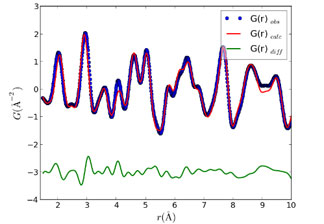
Figure 2: Rietveld refinement (left), and PDF fit (right) of pristine Li2VO2F using average structure.
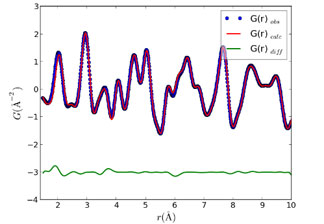
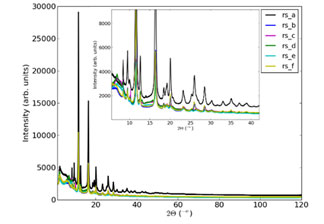
Figure 3 (left): PDF fit of Li2VO2F obtained refining scale factor, lattice parameters, isotropic ADPs and atomic fractional coordinates (x, y and z) for Fluorine.
Figure 4 (right): XRD patterns of Li2VO2F cathode materialat different charge/discharge states.




